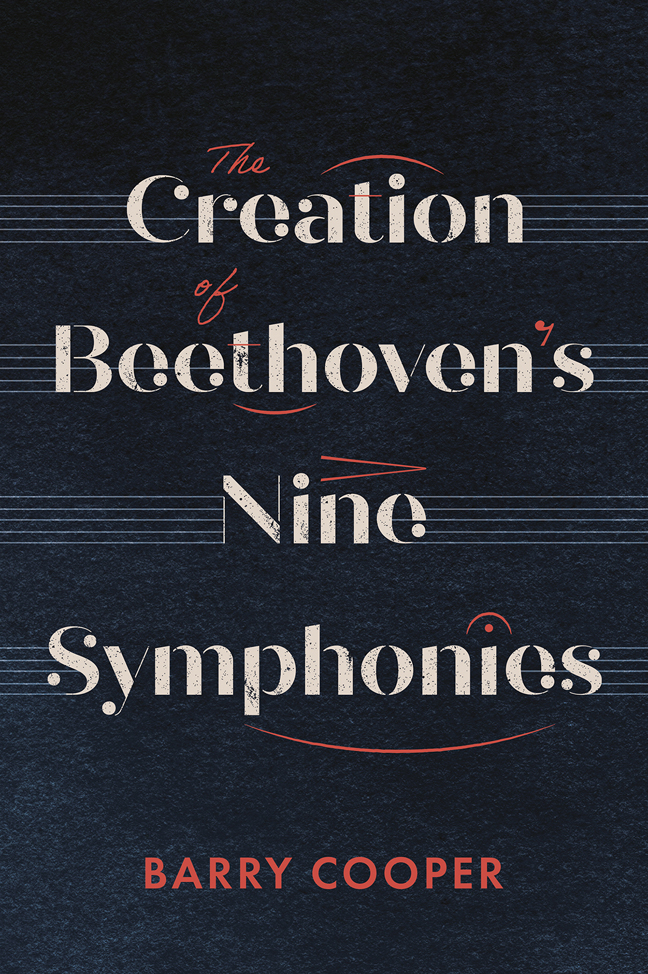Book contents
- Frontmatter
- Contents
- List of music examples
- List of tables and figures
- Preface and acknowledgements
- Abbreviations
- Introduction
- 1 The Long and Hazardous Road to the First Symphony, Op. 21
- 2 A Creation in Two Parts: The Second Symphony, Op. 36
- 3 Elevating the Genre: The Third Symphony (Eroica), Op. 55
- 4 The Oppersdorff Connection: The Fourth Symphony, Op. 60
- 5 Motivic Intensity: The Fifth Symphony, Op. 67
- 6 ‘More an Expression of Feeling than Painting’: The Sixth Symphony (Pastoral), Op. 68
- 7 ‘Great, Exalted’ Work: The Seventh Symphony, Op. 92
- 8 ‘Just Because it is Much Better’: The Eighth Symphony, Op. 93
- 9 The Philharmonic Connection: The Ninth Symphony, Op. 125
- 10 Epilogue
- Bibliography
- Index of Music Manuscripts
- Index of Beethoven’s Works
- General Index
9 - The Philharmonic Connection: The Ninth Symphony, Op. 125
Published online by Cambridge University Press: 02 March 2024
- Frontmatter
- Contents
- List of music examples
- List of tables and figures
- Preface and acknowledgements
- Abbreviations
- Introduction
- 1 The Long and Hazardous Road to the First Symphony, Op. 21
- 2 A Creation in Two Parts: The Second Symphony, Op. 36
- 3 Elevating the Genre: The Third Symphony (Eroica), Op. 55
- 4 The Oppersdorff Connection: The Fourth Symphony, Op. 60
- 5 Motivic Intensity: The Fifth Symphony, Op. 67
- 6 ‘More an Expression of Feeling than Painting’: The Sixth Symphony (Pastoral), Op. 68
- 7 ‘Great, Exalted’ Work: The Seventh Symphony, Op. 92
- 8 ‘Just Because it is Much Better’: The Eighth Symphony, Op. 93
- 9 The Philharmonic Connection: The Ninth Symphony, Op. 125
- 10 Epilogue
- Bibliography
- Index of Music Manuscripts
- Index of Beethoven’s Works
- General Index
Summary
Allegro ma non troppo e un poco maestoso
Molto vivace – Presto [etc.]
Adagio molto e cantabile – Andante moderato [etc.]
Presto … Allegro assai … Allegro assai vivace: alla Marcia – Andante maestoso [etc.]
Earliest ideas
Beethoven’s Ninth Symphony, sometimes known as the ‘Choral’, belongs in a different world from the previous eight. It took far longer to compose than any of them – more than six years from start to finish, with some ideas stretching back further still; its complexity on several levels – motivic, tonal and structural – is conspicuously richer than theirs; and it is on a much larger scale, lasting over an hour in performance and requiring larger forces, notably four vocal soloists, a chorus and added percussion instruments in the finale. Czerny’s summary impression, written on 8 June 1824, shortly after the first two performances, was highly perceptive, noting that the work ‘for the most part breathes such a fresh, lively, indeed youthful spirit, as much power, innovation and beauty as anything from the head of this original man’.
As noted in the Introduction, in the eighteenth century the word ‘symphony’ had come to mean either a self-standing instrumental work or a purely instrumental movement within a vocal work. Thus a symphony incorporating voices was almost a self-contradiction, until Beethoven embraced the concept during the course of work on the Ninth Symphony. Even then, it took much further time for him to move from initial idea to its final fruition, in which the voices sing sections of the poem An die Freude (To Joy) by Friedrich Schiller (1759–1805). The poem is often known as the ‘Ode to Joy’, although it is not strictly an ode. The symphony has since been the subject of several general accounts, as well as studies of specific aspects of its creation, but the sketches are so extensive that no complete account of the work’s creation has yet appeared, and the present one is necessarily selective. A broad overview of the sketch sources has been provided by Sieghard Brandenburg, but creative activity continued long after Beethoven had first drafted the autograph score.
Beethoven’s earliest known sketch for a symphony in D minor appears in Landsberg 6, page 177, and dates from around March 1804, but it was quickly transposed and incorporated into some preliminary sketches for the Fifth Symphony (see Chapter 5, Example 5.4) before being abandoned altogether.
- Type
- Chapter
- Information
- The Creation of Beethoven's Nine Symphonies , pp. 228 - 268Publisher: Boydell & BrewerPrint publication year: 2024

